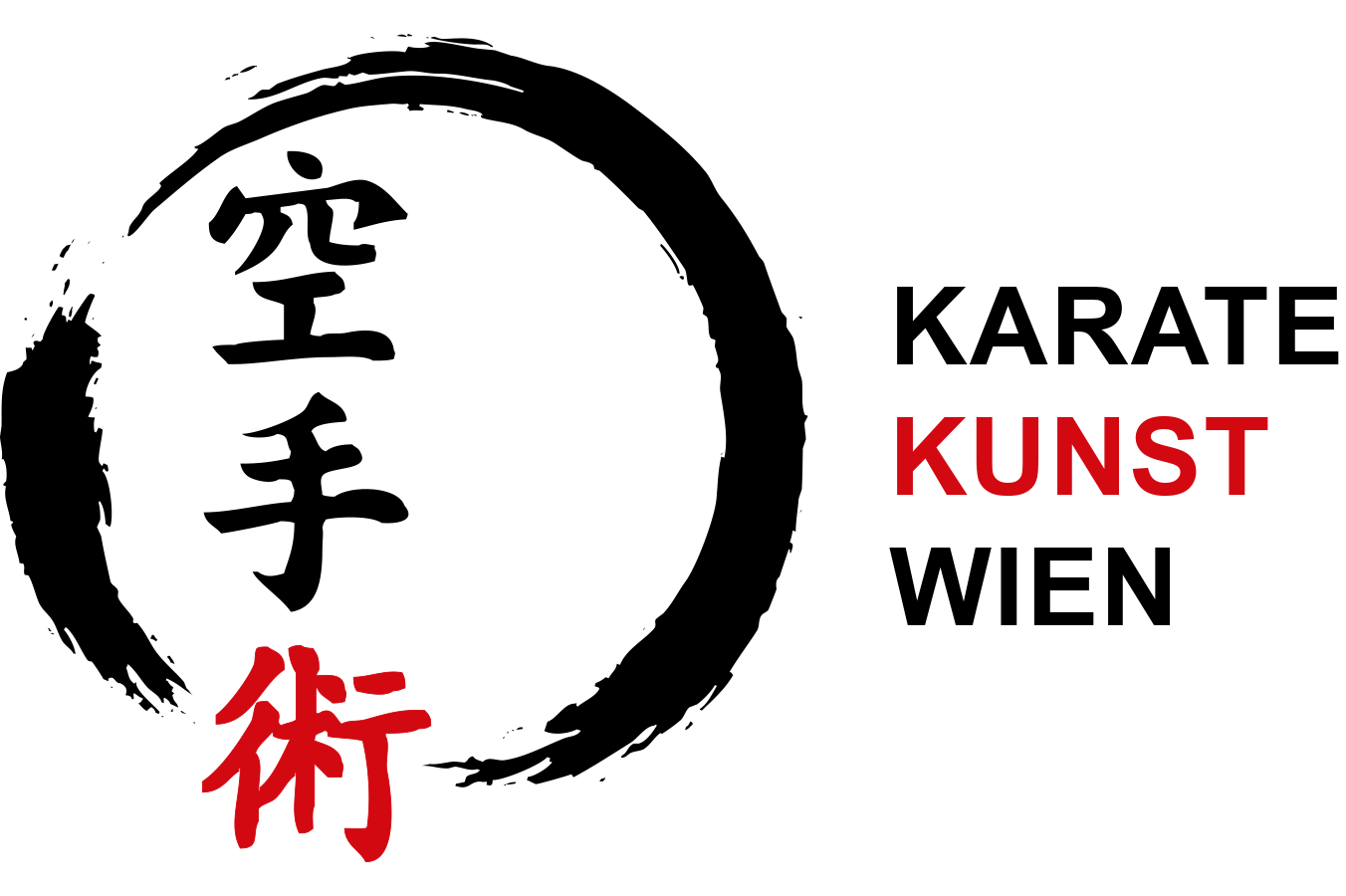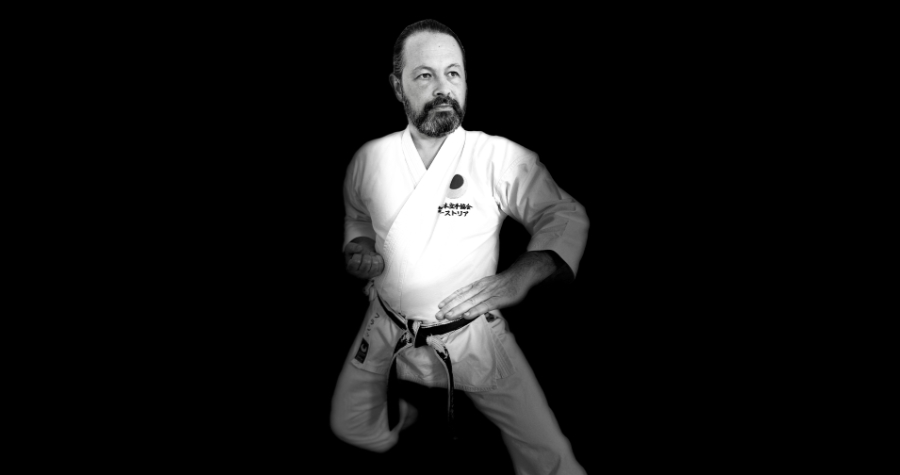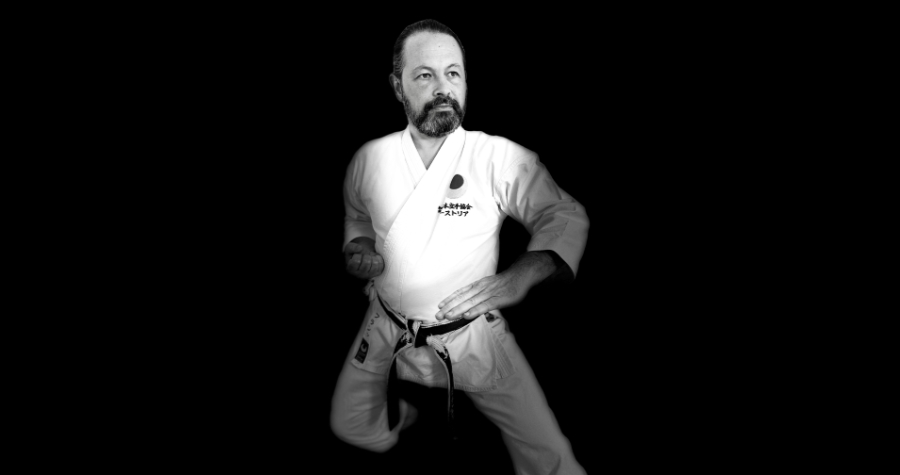Karate Flow Part 2 – Karate techniques as movement flow
How body and mind merge into a flowing unity in the sense of Karate Flow
Good technique consists of a perfect beginning and end… and the right in-between!
Not only the course of training over the years should be understood as a flowing process, but above all the technique itself should develop into a flow of movement.
As a beginner you learn to perform techniques in stages – again using the example of oi-zuki as already mentioned in Karate Flow Part 1: First push off with the back leg until both legs are at the same height, then push off with the other leg and stretch the arm on the same side with the punch. During the first few years, the process will look strict and stiff – this is because individual movements are being carried out and harmonization of all body parts involved has not yet taken place.
Instead of trying to do the oi-zuki faster and faster, the real challenge is slowing it down. All parts of the body are to be moved forward in the slowest slow motion: knees, hips, upper body, shoulders, elbows, fists, etc. without noticing the transitions between individual sections.
The most difficult transition of all is the one from rest to movement. In Karate Flow Part 1, it was described that instead of a jerky impression, a smooth pull through the inner muscles is also possible.
In slow practice, the relaxed initial tension should now be carried along continuously and without rigidity from the start without any slack over the entire movement sequence and only increased to absolute muscle tension at the end. Fast movements mask many mistakes or inaccuracies, also because the optimal interaction of the various muscles and limbs is not perceived as consciously when executed quickly as with slow-flowing movements. This is where true mastery shows, when the technique is carried out at the same speed from start to finish, without tension, to a controlled end.
The masterful kata lives through the karate flow
After the harmonization of one technique, the smooth sequence of related processes with defense and counterattack follows. For example, starting Heian Shodan with gedan-barai and oi-zuki shall not be understood as two techniques, but as one. This means that the oi-zuki must seamlessly follow the gedan-barai so that the imaginary opponent has no time to react. Especially when interpreting kata as a defense against several opponents, it is essential to neutralize the first attacker as quickly as possible. And immediately afterwards, a smooth change of direction to the next adversary is carried out.
In order to learn how to „flow“ a kata, it is not necessary to practice higher kata like Nijushiho – a very nice kata, by the way, with an elegant change of rhythm from slow to fast and vice versa. Such black belt kata are advanced examples of learning timing, distance and alternation of tension. After some practice it is possible to repel even a fast attack, for example with gyaku-zuki, with a slow but properly timed osae-uke (the first technique in Nijushiho), elegant bunkai application of Karate Flow.
In combat it is important to be able to execute simple techniques quickly and effectively. Once the techniques have been consolidated, one learns to go into the attack in order to break it. At the same time, this movement puts distance between you and another opponent.
One should face a single attacker calmly, study the opponent and wait – perhaps one’s own fighting stance is so convincing and insurmountable that he changes his mind and retreats.
But against multiple attackers you must always keep moving, into one attacker and thereby away from another and so on, body and mind remain in the karate flow until the fight is over.
Therefore, the kata step diagrams also run in all directions to practice orientation and movement in space.
With all these aspects in mind, a good Heian Shodan can be challenging even for a black belt! The seamless movement is then no longer performed only within one technique, but all techniques merge into a uniform form. Defense and counterattack are then not two separate techniques, but one unit. In this way, the master can fill even the simplest kata with life and spirit!
Mushin – The spirit of the warrior flows into emptiness and „It“ fights!
Athletes train primarily to perform techniques more powerfully and faster; Martial artists, on the other hand, aim to develop harmonious whole-body movement as described. The advantage of harmoniously executed techniques in Karate Flow is the lower use of force and the seamless transition between different sequences or even the start of a movement. This makes it much more difficult for an opponent to recognize the type of technique and to be able to react to it.
But the more important aspect of harmonious movements lies in the positive health effect: joints and tendons are spared, body awareness is increased and breathing becomes more even and deeper, which means that the whole organism is better supplied with oxygen.
Many karateka end their own training at the end of their sporting career because up to that point they had “only” learned dynamic karate, without harmonious karate flow. In advanced age, combined with muscle loss, the erratic, fast form of sports karate is no longer practicable.
The esteemed master Takeji Ogawa once said: „Young karateka fight like wild stallions; soo strong, lots of noise, lots of energy! But not very many years possible to fight like that… later different, later Karate-do!“ At the age of 80, Ogawa sensei still holds a class once a week at the ASKÖ Karate Steyr club, where he teaches diligently and inspires with incredible charisma and vitality.
With appropriate adaptation of the technique to the changing physical conditions with a focus on flowing processes, a mature old master can still hold his own very well against the wild youngsters! The automation of all processes also helps here, thanks to which the master can intuitively call up the right techniques at the right time: „It“ (= the unconscious) fights!
Parallel to the flowing technique, the flowing or empty mind (mushin) develops with appropriate practice, which means a state of thinking that does not cling to anything and is therefore flexible and relaxed.
Takuan Soho (Japanese Zen Master 16th century, teacher of important sword masters like Miyamoto Musashi):
“The mind must always be in flow, because when it stops, that flow is interrupted, and this interruption is bad for the well-being of the mind. For a swordsman, this means death. When a swordsman faces his opponent, he must not think of the opponent, not of himself, and not of the movements of the opponent’s sword.“
Applied to karate, this statement is true for both, kata and kumite. As long as you consciously do one technique after the other in the kata, the process is not round and harmonious – a masterful kata arises from „not thinking about it“, but simply letting it go. That is why many masters of kata also speak of „Moving Zen“.
By „fixing“ the mind on any aspect, one blocks the view of the whole. If, for example, you constantly think about the opponent changing his position in a competition, or always only pay attention to his cover, you are easily distracted by this or are susceptible to feints. The same applies if you only pay attention to yourself or the next possible technique instead of your opponent. The experienced fighter rests within himself, empties his mind and lets his intuition take over. In doing so, intuition retrieves the automated processes acquired over many years of training from the subconscious.
Mind and body thus become one, interwoven, but never rigid, but always in flux.
„And to recreate the created,
Lest it arm itself to stare,
Eternal, living activity works.
And what wasn’t, now it wants to be
To pure suns, colored earths;
In no case should it rest.
It should stir, act creatively,
Form first, then transform;
It only seems to stand still for a moment.
The eternal moves on in all:
Because everything must crumble into nothing,
When it wants to persevere in being.” (Goethe)

 Franz Peischl
Franz Peischl
 Franz Peischl
Franz Peischl
